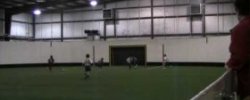Complement Ball found in the FA Cup Final of 1893
Wolves 1 Everton 0
Mass production of soccer balls started as a direct consequence of the English Football League that has been created in 1888. Mitre and Thomlinson's of Glasgow had been two for the very first organizations to mass-produce soccer balls during that time. They touted that the important element in an excellent baseball was how well it could retain it really is shape. Power associated with fabric and skills of this blades and stitchers were the main elements in creating a football that would retain it is form. The most effective quality covers had been made with leather-based through the rump of a cow while lower quality balls were produced from the shoulder. Advances in basketball design came with the introduction of interlacing panels instead of the used leather sections that met at the north and south poles regarding the baseball. The balls had been then produced with an even more appropriate round shape.

Formal FC Barcelona Museum 1899 Eight Panel Ball
1900 Eight Panel Ball - image from Jacques Barralon
1910 Soccer Ball
Unknown
By the 1900's bladders were fashioned with more powerful plastic and might withstand thicker stress. Many balls created by that time utilized plastic bladders. The balls had been made of inner tubes covered with heavy brown fabric. These balls would jump simpler and yet could possibly be kicked. Most balls had a tanned fabric cover with eighteen sections stitched collectively organized in six panels of three strips each. Each part had been stitched together by hand with five-ply hemp and a small lace-up slit had been on one side. The stitching was through with the ball cover inside out. Once completed, the cover ended up being corrected using the sewing on the inside. An un-inflated bladder was then placed through slit. An extended stem neck (aperture) extending from bladder was always inflate the basketball. When inflated, the pipe had been placed through 15 cm slit and then the orifice ended up being laced up tight. Imaginable how many times that these soccer balls had to re-inflated. Also during a game.
These balls were good-for kicking but had been painful when heading as a result of hefty stitching as well as the liquid absorption attributes for the leather-based. Water consumption of the fabric during rain made the baseball extremely hefty and caused many mind accidents. Various other problems of old leather-based balls were the many top-notch cowhides used. Footballs varied thick and high quality therefore the fabric frequently degraded throughout the match.




apuestas














